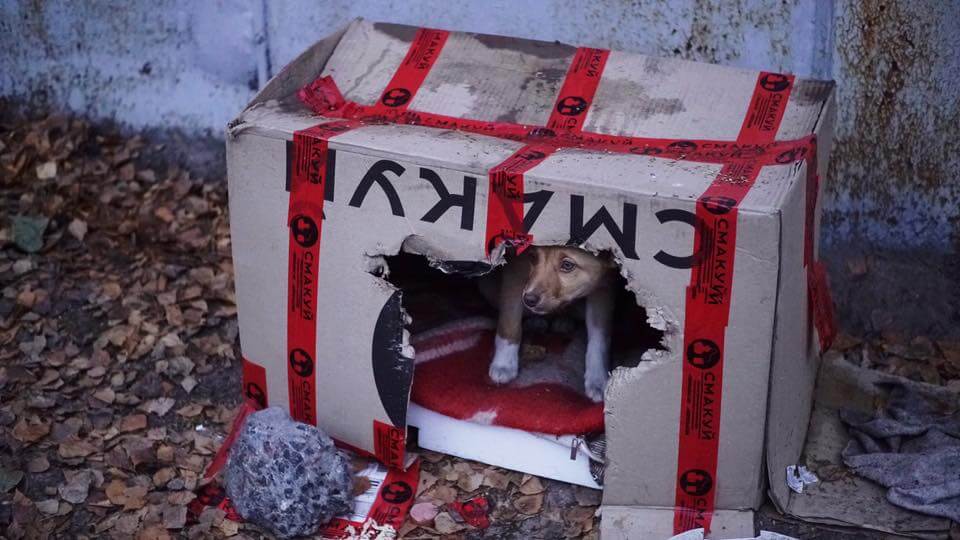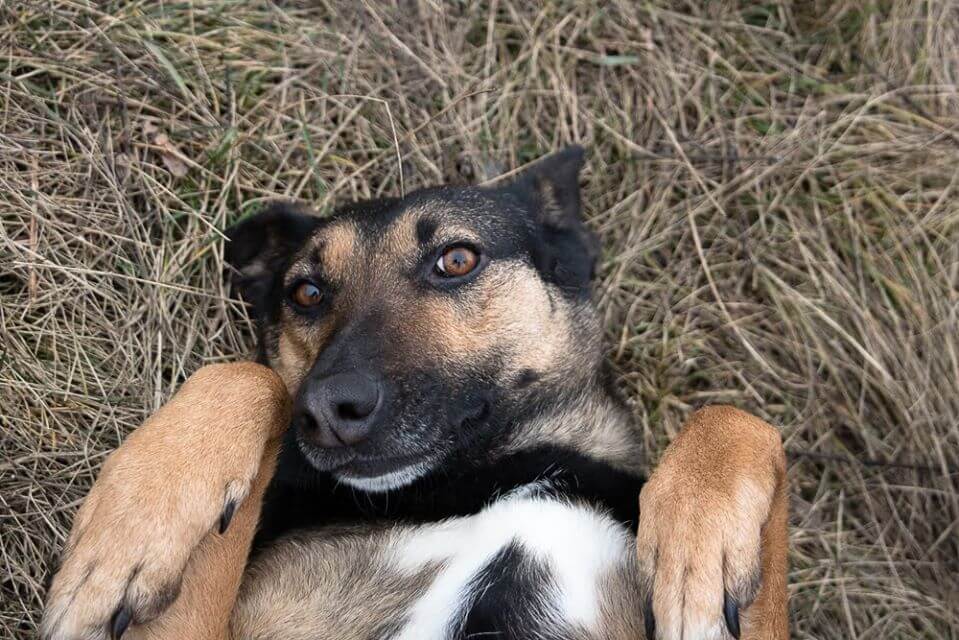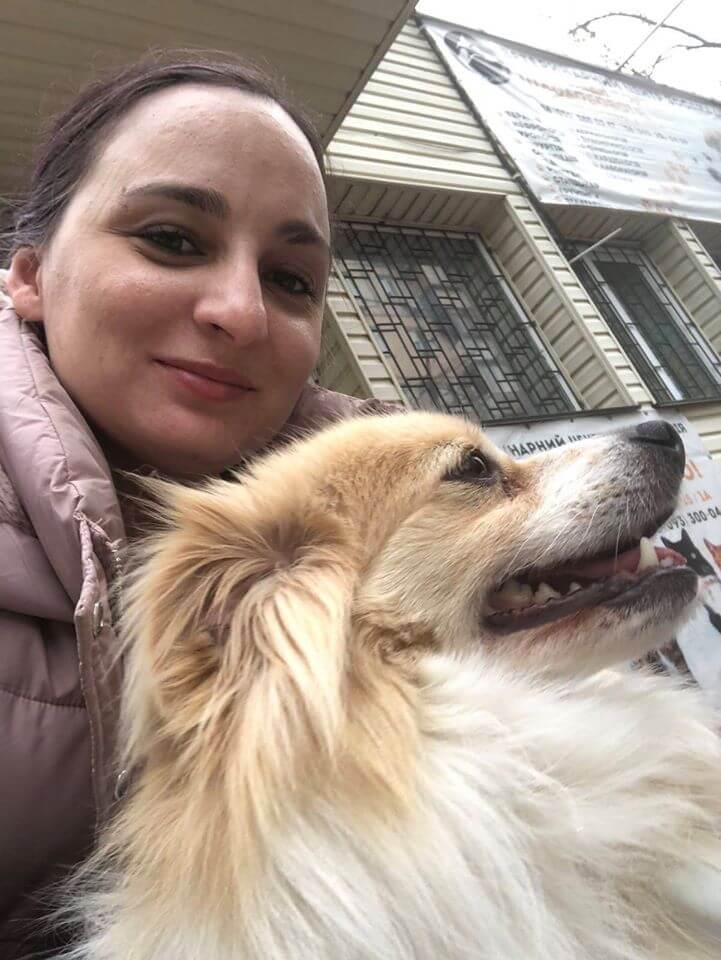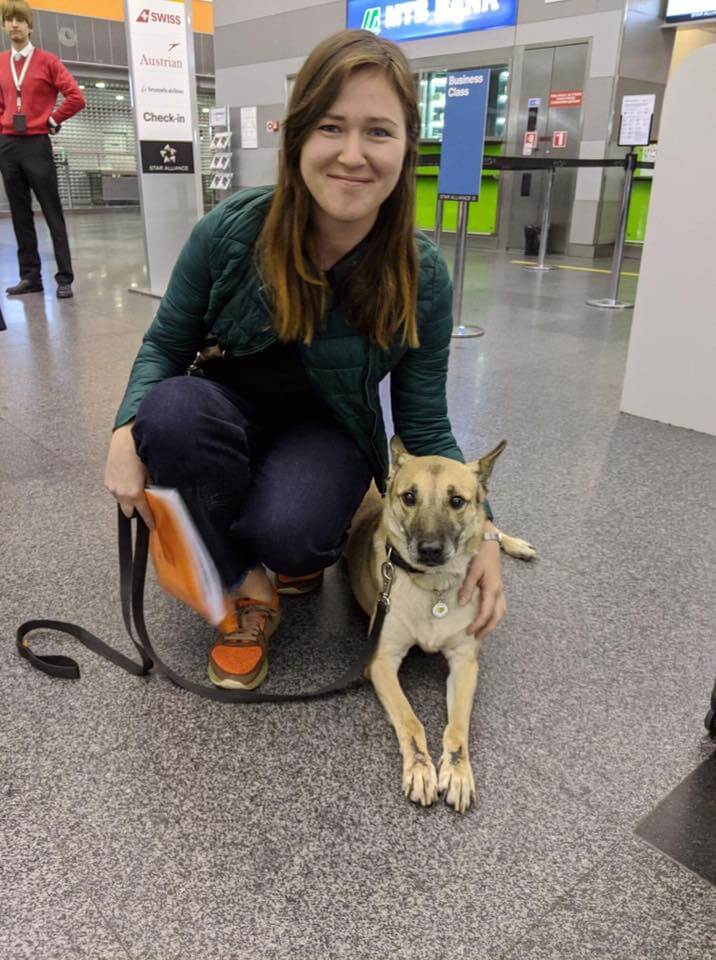New Life For Homeless Dogs

How would it feel to be a stray dog, born or dumped in the street? Shivering from cold, suffering from starvation, and facing the struggle of life without a home — all you can do is beg to passers-by and wait in desperation.
According to Animal Id Info, there are nearly 50 000 stray dogs in Ukraine. Upon visiting the country in 2018, Mandy Allen, originally from San Francisco, could not ‘just pass by’ as many others do. One day, Allen visited Sofiyivka Park in Uman, where she encountered huge numbers of abandoned dogs, and her heart went out to them. In response, Allen made friends with the local volunteers who actively rescue stray dogs by taking them home or finding temporary housing for them.
Allen explains: “They used their own resources, effort, and time. I thought I would help them raise money to care for the dogs.” One of Allen’s partners, Victoria Goncharuk, who works for the EU Delegation to Ukraine, remembers: “I met Mandy in one of Kyiv’s animal shelters. I had just read about Americans adopting dogs that had been rescued from the Chornobyl zone. Mandy said she wanted to launch a similar project.” That’s how Transform A Street Dog emerged — a charity initiative that helps unite abandoned dogs in Ukraine with loving American families.
Why So Far Away?
It is difficult to find homes for dogs in Ukraine — a key reason is people’s attitude toward them. “Americans and the global community in general are more accustomed to adopting dogs from shelters. They are not after the breed or ‘huggable looks’. What is striking is that they are attracted to senior, handicapped dogs. Americans treat them as children,” says Goncharuk.
Allen adds, “In Ukraine, it is fashionable to a have a purebred dog. In America, we have a different culture. If you want to have a dog, you adopt it from a rescuer or shelter. In California, where I live, it’s illegal for pet stores to sell dogs from breeders. They can only sell dogs from rescue groups or shelters. That’s why they are popular here.”
Another thing is Americans feel good about caring for disabled pets — it makes them feel somewhat heroic and the initiative is yielding tangible results. Allen states: “Now into our second year, we are just getting started. In 2019, we brought 10 dogs to America. On average, they get adopted within 2-5 days. Eventually, I want to increase this number to 20 dogs a month; we are always looking for more flight volunteers to help us reach this goal.
Thanks to this rehabilitation program, a number of dogs have also been adopted by expats in Ukraine. Over a short time, Allen, with her volunteer team, have managed to set up a Ukraine-US network.


Donations are Key
The organisation offers a program called Virtual Adoption
(hyperlink: http://whatgoesarounddogs.org/virtual-adoption), which shows donors how their money makes a difference to the dogs’ lives. Allen says, “People read stories of the dogs and donate to them. We pay for medical care, rehabilitation, training, vaccination, passports, travel expenses, etc. until the dog meets its new owners. Sponsors get updated on the progress, step by step.”
‘Peretrymka’
Allen says, “We rent three kennels from Natalia Nikolenko, the manager of the private shelter ‘Big Heart’ in Boryspil, where we bring the rescued dogs until we find them a foster.” Goncharuk is one of those helping to rehabilitate dogs and preparing them for the journey abroad. She fostered the very first dog, Freya, who was transported to the US. “We give dogs the first experience of living with people. We teach them to have a bath, walk on a leash, and go toilet outside,” explains Goncharuk.
If required, a professional trainer comes in to help improve the emotional health of traumatised dogs and train them to be more cooperative. “We can’t bring a dog to America that poses any risk of biting,” Allen states.
Kyiv-based Inna Astakhova coordinates all activities, from the moment a dog is found in the street until it gets adopted: “For me, the most crucial thing is to provide proper vet treatment and select the ideal owners for the dog.”
Travelling Over the Border
Flight volunteers assist the team in transporting animals overseas. Allen says, “We wait for someone to travel from Kyiv to the US. They need to have a ticket and agree to add a dog to their flight reservation. We take care of the rest. A volunteer brings the dog to the airport and stays until it is checked in. The dog travels separately, underneath the passenger cabin. On arrival to the US, our volunteer or a family meets with the person and picks the dog up.” They try to make it very easy for the flight volunteers.

Transformation Happens
To truly grasp the program, one needs to preview the before and after pictures of a dog that has been adopted. “Seeing such a big difference is the most rewarding thing,” says Allen. Saving one dog will not change the world, but for that dog, their world changes forever.
Nikolenko comments, “Dogs who stand no chance in Ukraine due to their age or health can now become pets. Bonna and Jolie lived in our shelter for 6.5 years. Now, they are spoilt by new families in California. It is a real miracle!”
The project requires more volunteers, fosters, adopters, and soulmates to give hope to abandoned animals not only in the US but also in Ukraine.
Check out these links to find out how to get involved:
www.whatgoesarounddogs.org
Facebook: https://is.gd/9vP6EX
Watch the videos:
https://is.gd/qlZZra
Meet Zaria: https://is.gd/NPTnBr
Photo credits: Transform A Street Dog
REAL STORIES
 Victoria Goncharuk: “We found Zayka in a shelter. He was in a very bad state — almost blind. I took the dog in to rehabilitate him for a journey to California. I found a good eye doctor, and with proper nourishment, friendly ambience, and affectionate care his sight was restored. Due to the current lockdown, the dog is stuck in Ukraine. I’ve developed a strong attachment to him. Zayka is still with me and on good terms with my cat.”
Victoria Goncharuk: “We found Zayka in a shelter. He was in a very bad state — almost blind. I took the dog in to rehabilitate him for a journey to California. I found a good eye doctor, and with proper nourishment, friendly ambience, and affectionate care his sight was restored. Due to the current lockdown, the dog is stuck in Ukraine. I’ve developed a strong attachment to him. Zayka is still with me and on good terms with my cat.”
 Sam Parsons, an expat and foster who is living in Kyiv says, “We now have our third foster dog. My three-year-old daughter bonds with every dog that walks through the door, and so does our dog (a rescue), my husband, and myself. Being able to see a dog go from scared or in pain to happy and healthy is an unbelievably rewarding experience. The first dog we fostered, Bora, had never lived in a home and was scared of absolutely everything. It was challenging in the beginning, but Bora came out of her shell a little bit every day, and we fell in love with her very quickly. It was sad to see her go, but we know she’s now in a wonderful forever-home in the US. We were able to help another dog, Hopper, who came to life after recovering from surgery on his leg and is now being spoilt by his new family.”
Sam Parsons, an expat and foster who is living in Kyiv says, “We now have our third foster dog. My three-year-old daughter bonds with every dog that walks through the door, and so does our dog (a rescue), my husband, and myself. Being able to see a dog go from scared or in pain to happy and healthy is an unbelievably rewarding experience. The first dog we fostered, Bora, had never lived in a home and was scared of absolutely everything. It was challenging in the beginning, but Bora came out of her shell a little bit every day, and we fell in love with her very quickly. It was sad to see her go, but we know she’s now in a wonderful forever-home in the US. We were able to help another dog, Hopper, who came to life after recovering from surgery on his leg and is now being spoilt by his new family.”

Maryna Liapina, a Kyiv-based volunteer who finds street dogs: “I met Botsman when he was nursing tiny puppies as their mom was away scouting for food. We got those puppies adopted, but the mom was hit and killed by a car. Recently, I noticed that Botsman was suffering from a serious leg injury. We took him to the vet. He underwent surgery and had to stay in the clinic for a while. A big-hearted New Yorker living in Kyiv took him in. Though the dog is seven to eight years old, we have had many adoption-offers from the US. We hope Botsman will find his forever-home.” 
Jena Dzitsiuk, a partner and flight volunteer says about a dog she helped, “Her name is Jolie, and she has a sad story. She felt so stressed in a shelter that she gnawed her paws to the bone. Foster care in Ukraine helped her a lot, but Jolie was six years old, and no one was interested in adopting her. We brought her to San Francisco, and Jolie stayed with me. She was smart, loyal, and friendly. Despite her anxiety issues, we found her a new family in two months! I met her at some point later — she looked like the happiest dog in the world. It was the most soul-touching moment for me!











